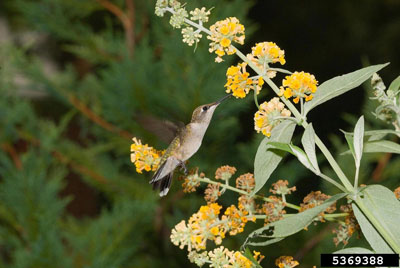
It’s easy to question the need for IPM when pesticides so often succeed at controlling pests. Here are some reasons for using IPM:
- Prevent initial pest problems. Many IPM practices are used before a pest problem develops to prevent introduction or hinder the buildup of pests. Prevention tactics can save time, money and the environment.
- Keep the ecosystem intact and functioning. Every ecosystem is made up of living things and their nonliving environment. The actions of one creature in the ecosystem will affect other organisms. Many of our actions in an ecosystem may destroy certain species and allow other species (sometimes pests themselves) to dominate. Beneficial insects, such as ladybird beetles and lacewings, both of which consume pests, can be killed by the improper use of broad spectrum pesticides, leaving fewer natural enemies. Other organisms such as soil microbes or protective fungi may be injured by pesticides, for example, certain fungicides, if used too frequently or when not needed.
- Reliance on one tactic can be problematic. Pests adapt and change to better exploit their environment and survive. Reliance on a single pest management tactic increases the chance that a pest population will become resistant to it. Pesticide resistance is a well-documented problem with some 600 cases of pest populations such as common lambsquarters, kochia, house flies, anopheles mosquitoes, Colorado potato beetles, Indian meal moths, Norway rats, and greenhouse whiteflies. To reduce the likelihood of pests becoming resistant to multiple chemical classes, rotate modes of action while using other management tactics. In addition to pesticides, pests can overcome host plant resistance (genetic control) and adverse environmental conditions. They can learn to evade predators, parasitoids and other natural enemies. As a broader approach to pest control, IPM reduces the risk that a pest can cause unacceptable levels of injury while also preventing it from adapting to the tactics used.
- Maximize effectiveness of control tactics. Pest control practitioners that apply pesticides on a calendar basis, such as every May 15th, are likely to miss their target pest. Pest life cycles depend on unique environmental factors. Likewise, biological controls may require specific timing so that releases of predators and parasitoids align with the biology of the target pest. Using an IPM approach will help ensure that all control tactics, including pesticides, are used at the proper time and to reduce pest damage to acceptable levels. This will reduce environmental and economic costs from unnecessary pesticide applications and help ensure that control tactics are used effectively.
- Promote a healthy environment and a good public image. IPM is a thoughtful approach to pest control, which protects human, domestic animal, wildlife, and environmental health, and provides abundant, affordable crops and safe living conditions–key goals that everyone can support.
- Conserve natural enemies. Beneficial organisms like parasites and predators are part of the natural enemies for some pest populations. These natural controls are considered and protected in an IPM program.
- Example: An outbreak of sugarcane aphid/sorghum aphids on sorghum in 2014 caused growers to control the aphid with pyrethroids which led to substantial impacts on the natural enemies feeding on the aphid. Post application, aphid populations were quickly able to resurge–moving in from untreated areas. The frequency of applications needed to control the aphid quickly made sorghum production unfeasible in certain years with high aphid pressure. After many years of research, a different class of pesticides that has lower toxicity to aphid predators and parasitoids was found to be effective. Together with tolerant varieties of sorghum and promotion of habitat favorable to natural enemies, sorghum growers have an effective strategy focused on routine monitoring and multiple tactics for suppressing aphid populations rather than total elimination through one tactic.
- Protection of soil health and crop production inputs. Plant health is dependent on soil health, so protection of soil health is a key component in any IPM program. Likewise, following an IPM program that includes plant health will help a grower get the best results from composts, fertilizers, micronutrients or other soil amendments, as well as improve irrigation efficiency and results.